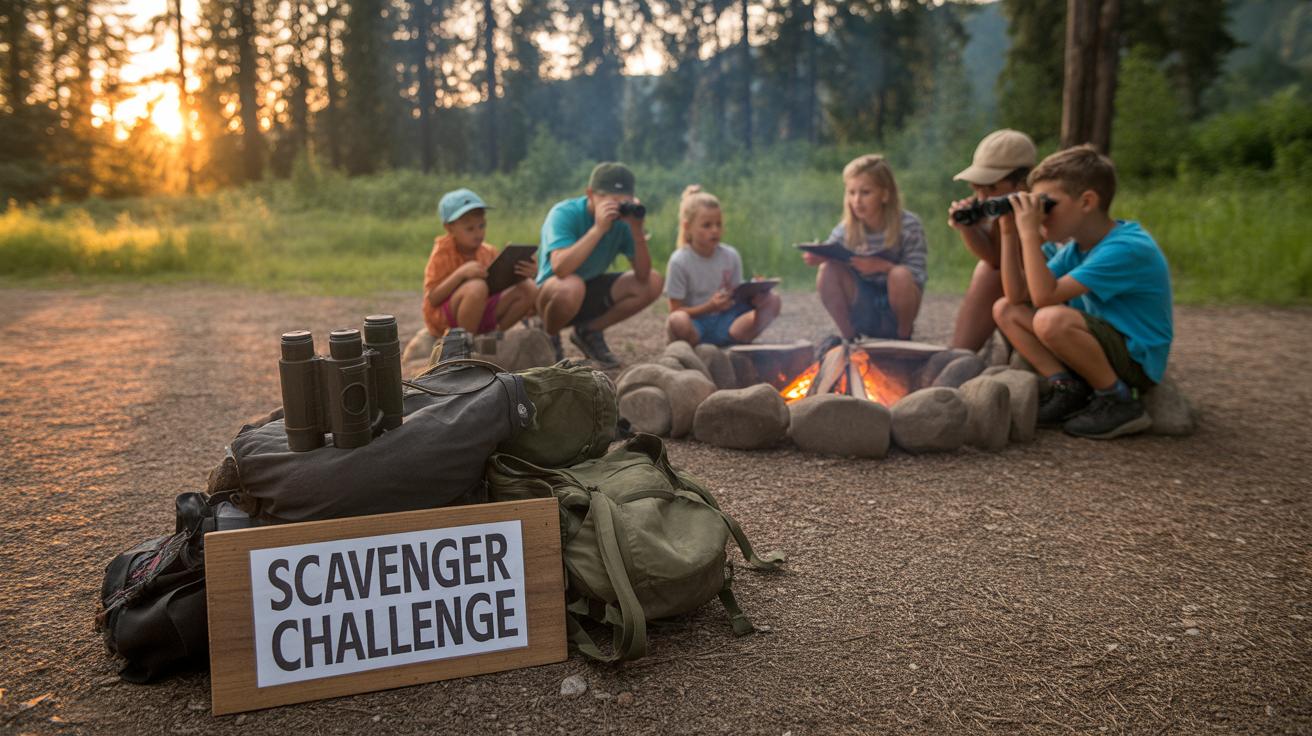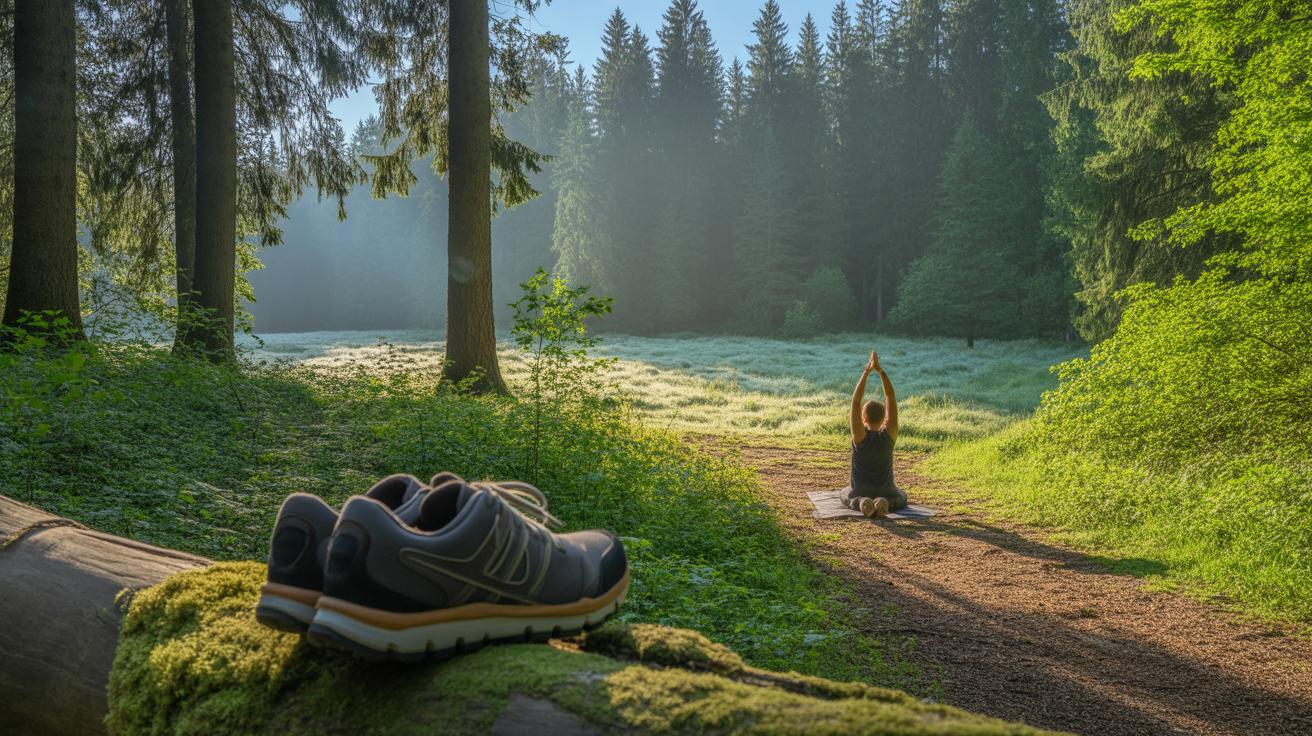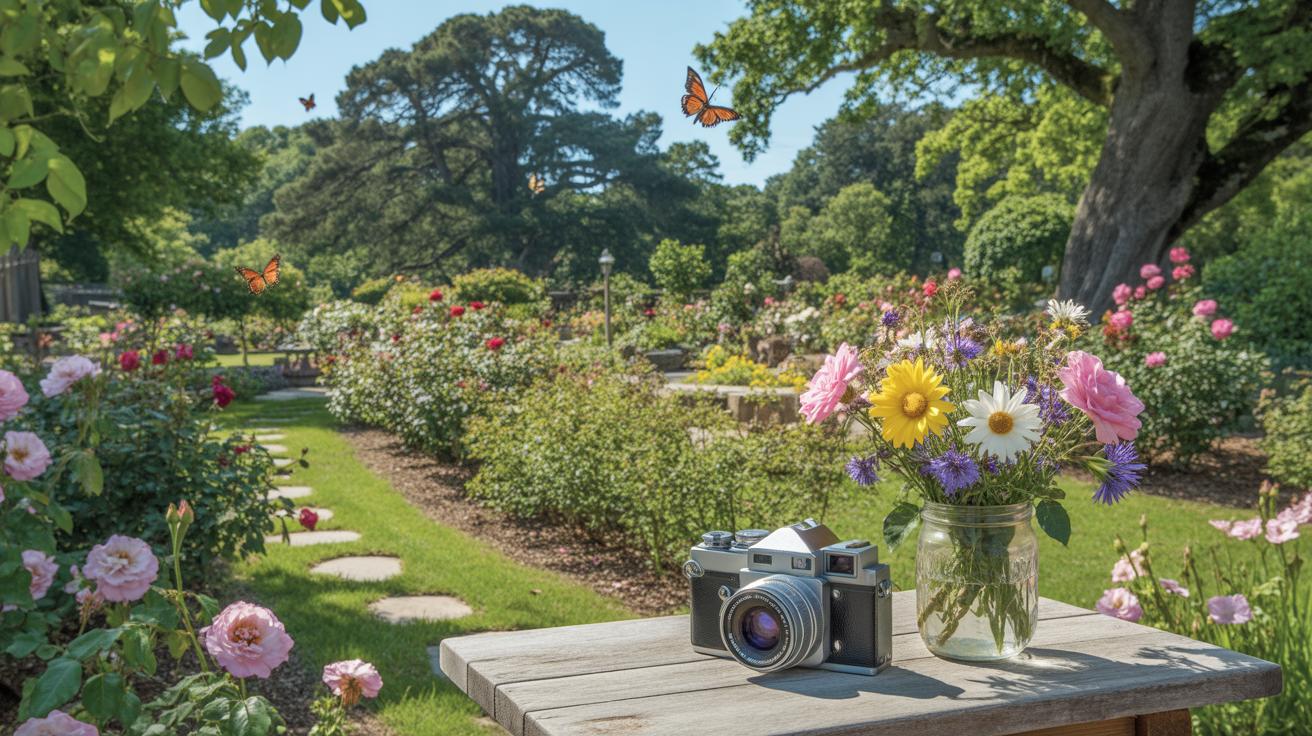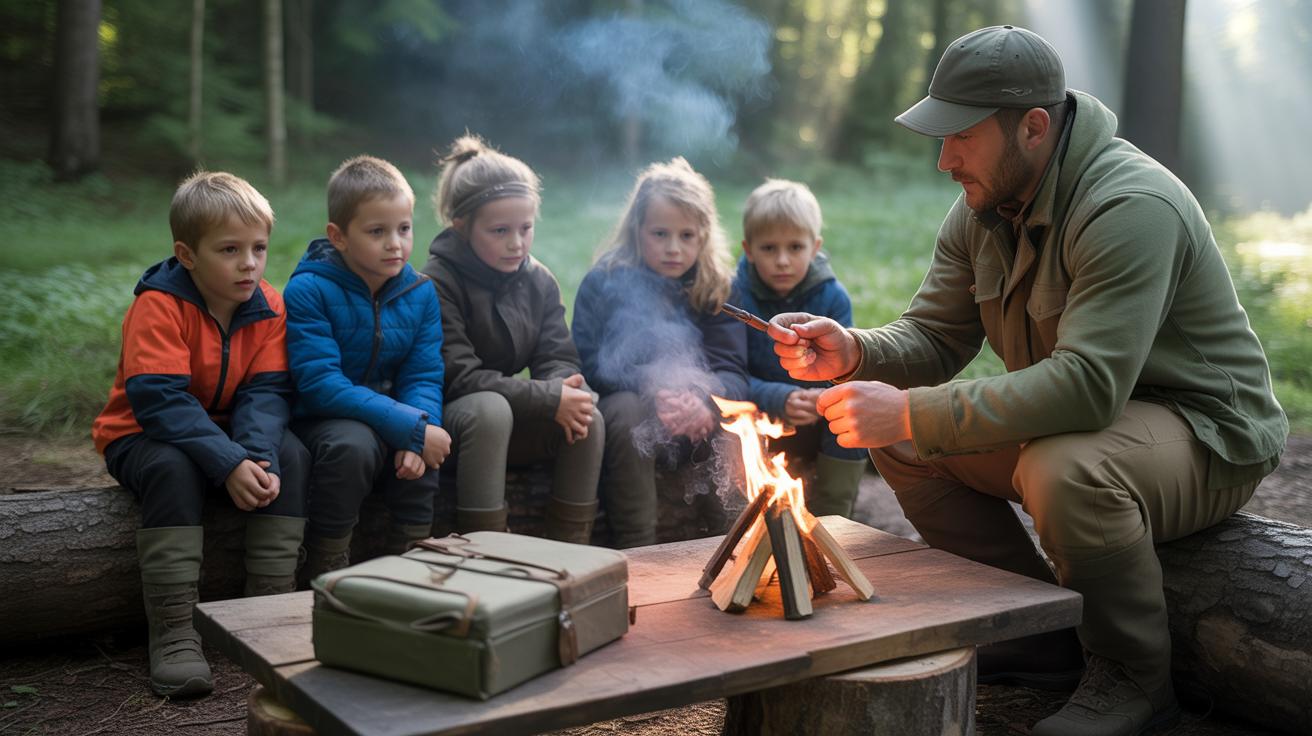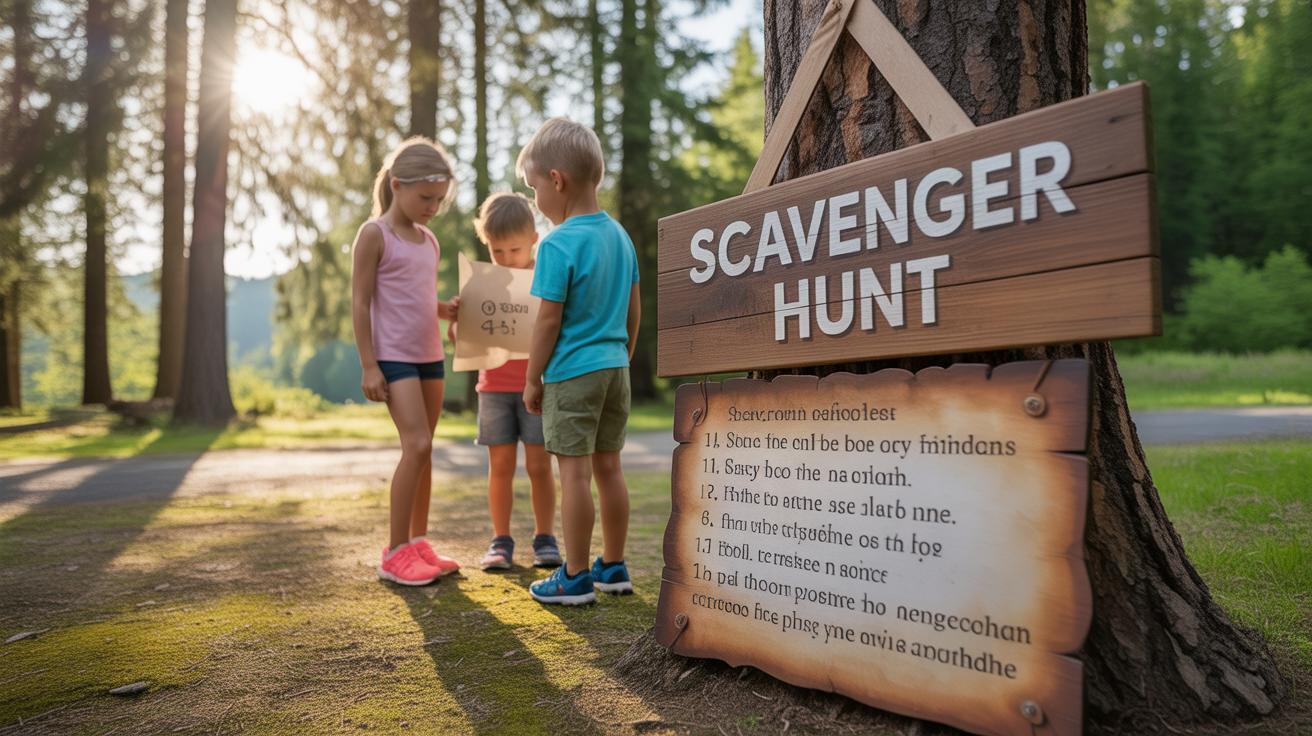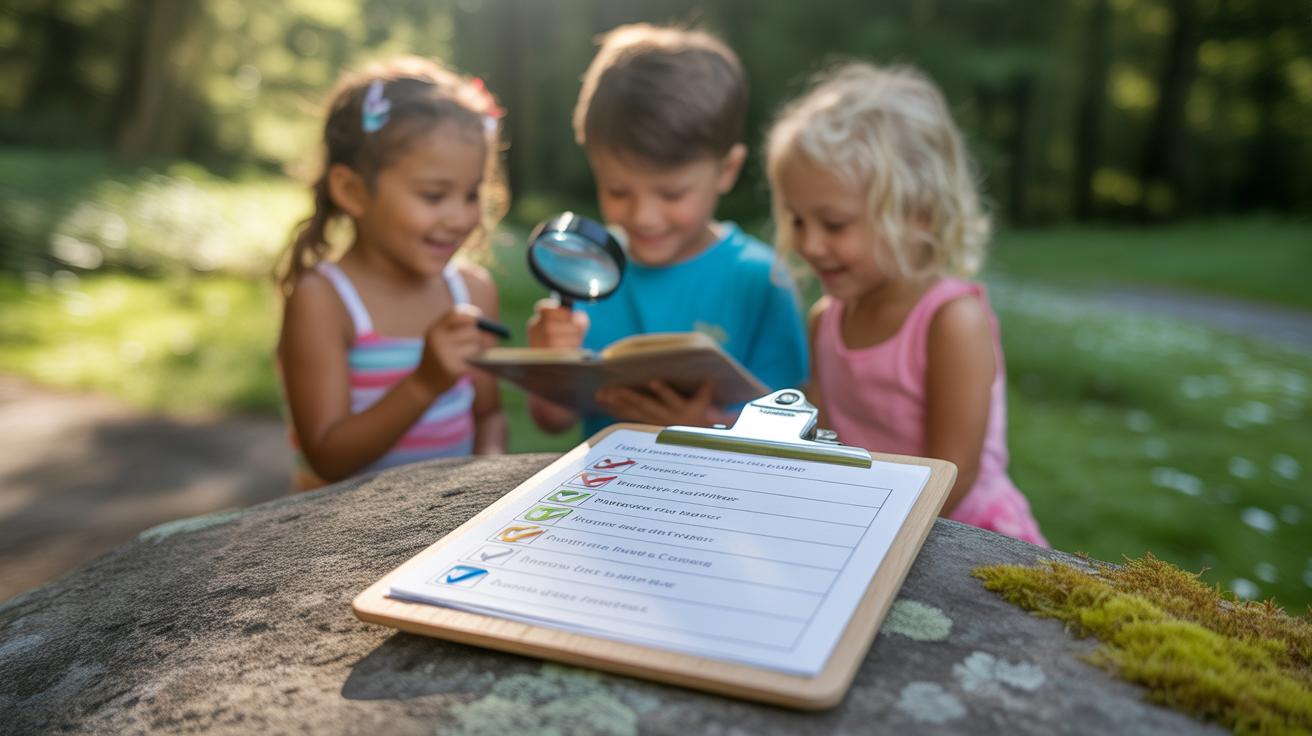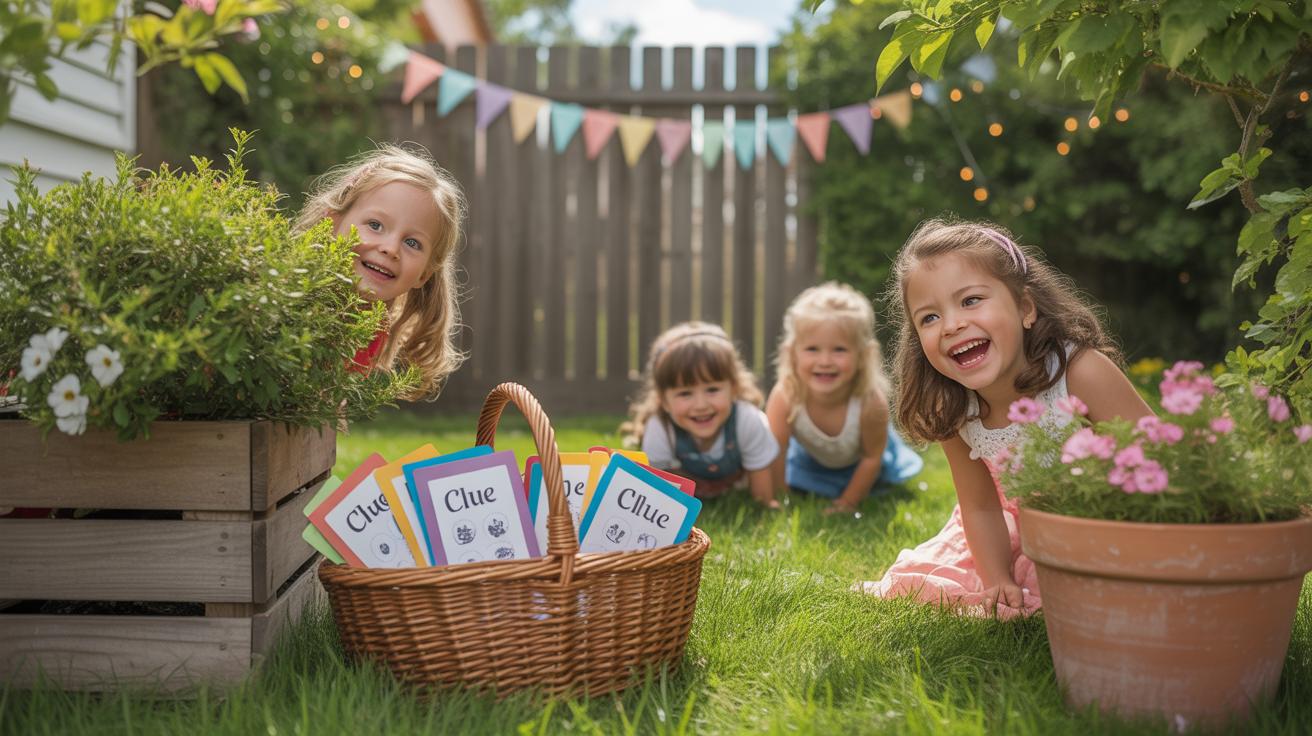Introduction
Camping is a great way to spend time outdoors. One fun activity that can be added to a camping trip is the Outdoor Scavenger Challenge. This type of camping game adds excitement and adventure to your time outside. You get to explore nature while searching for specific items or completing challenges. The game can be played by all ages, making it perfect for family and friends.
The Outdoor Scavenger Challenge game encourages teamwork and physical activity. It helps campers learn about the environment around them and keeps everyone engaged. In this article, you will learn what makes these games enjoyable, how to prepare for them, and tips to make them safer and more fun. Let’s explore how you can make your camping trip memorable with these games.
Benefits of Outdoor Scavenger Challenge Camping Games
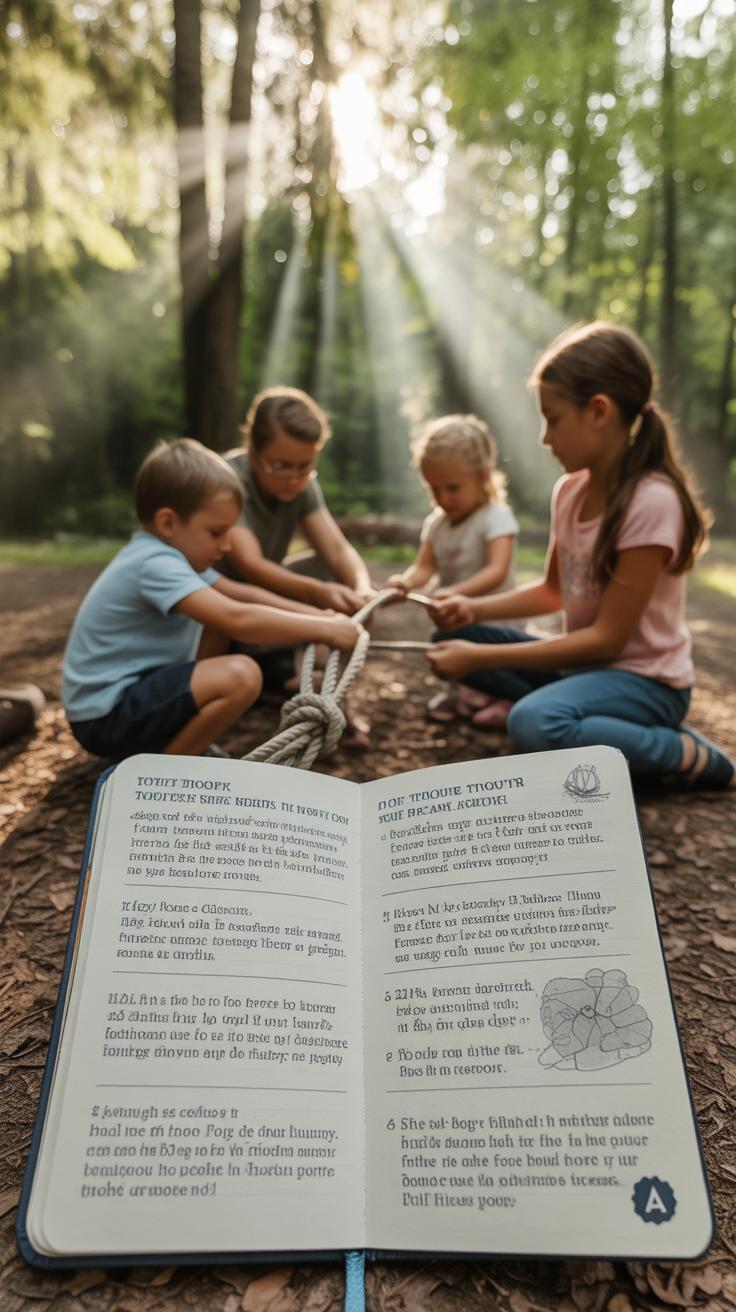
Playing scavenger challenge games outdoors during camping really gets you moving in ways you might not expect. Walking, running, bending over to inspect something closely—it all adds up to quite the workout, especially for kids who might otherwise be glued to screens. It’s not just random running around either; there’s a purpose in the searching and exploring. You might find yourself covering more ground than anticipated while chasing down items or clues, almost without realizing you’re exercising.
There’s something about being outdoors that sharpens the mind too. When you’re trying to spot a certain leaf or identify a bird call, your brain is on high alert. These games push you to notice details you’d normally overlook, like the texture of bark or the scent of pine. Plus, working in teams means you’re constantly communicating and solving little puzzles together, which can be surprisingly challenging. You learn to listen, share ideas, and sometimes, compromise.
Socially, the benefits might sneak up on you. Adults rediscover how to loosen up and have fun, while kids learn cooperation in a natural setting—not forced or classroom-esque. And, well, there’s a bit of healthy competition tossed in without it feeling overly serious. Have you noticed how kids seem to bond faster when they’re knee-deep in nature, hunting for clues? It’s an easy way to connect, I think.
So, besides being fun (and maybe tiring), these games nudge everyone—really everyone—to stay active, engage their minds, and connect with each other. And, if you ask me, that’s the best kind of bonus when you’re outside together.
How to Prepare for Your Outdoor Scavenger Challenge
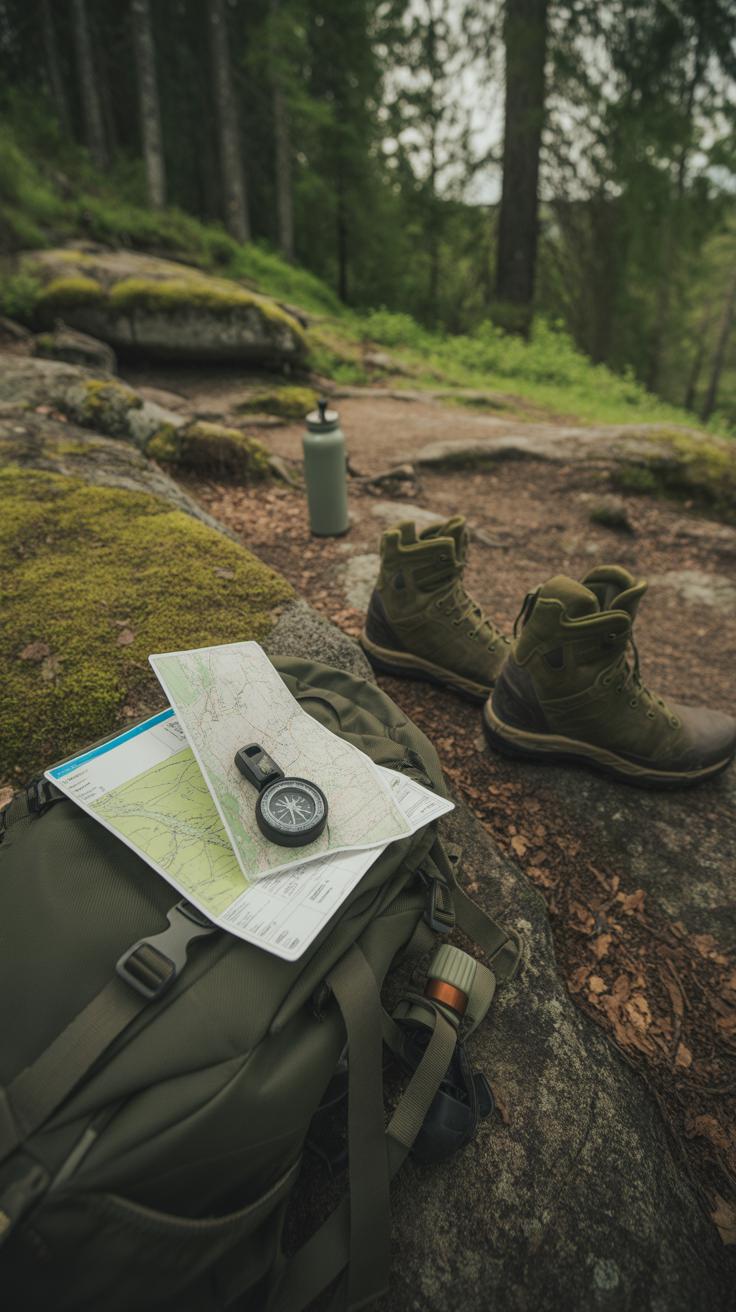
Choosing the Right Location
Picking the spot for your scavenger challenge can make or break the experience. You want a place that’s safe but also holds enough variety to keep everyone interested. Think about spots like forest edges, quiet parks, or lakesides. These areas often have a mix of natural elements—rocks, leaves, wildlife signs—that work well for the game.
Try to avoid places with too many hazards or restrictions. If you’re with kids, a site with clear boundaries helps keep everyone in sight, which feels better for parents. Sometimes, even a large backyard or community garden can work if you’re short on options. The thing is, the location should match the group’s energy and curiosity.
Creating the Scavenger List
When making your list, tailor it to the environment and the players’ age or skill. For younger kids, simple things like “find a smooth pebble” or “spot a red leaf” work well. Older kids or adults might enjoy tasks like “identify a bird call” or “locate a plant with thorns.” A mix of objects to find and challenges to do often keeps the game lively.
Lists don’t have to be long—sometimes shorter, focused lists are better, especially for smaller groups. It’s also worth thinking about questions that prompt observation rather than just collection. For example, asking players to note what insects they see or describe a tree can turn the scavenger hunt into a little discovery session.
Prepare materials ahead—clipboards, pencils, or even cameras can come in handy, depending on your list. Remember, the goal is to keep things fun and doable without making it feel like homework. That balance can be tricky but worth aiming for.
Rules and Guidelines to Keep the Game Fun and Safe
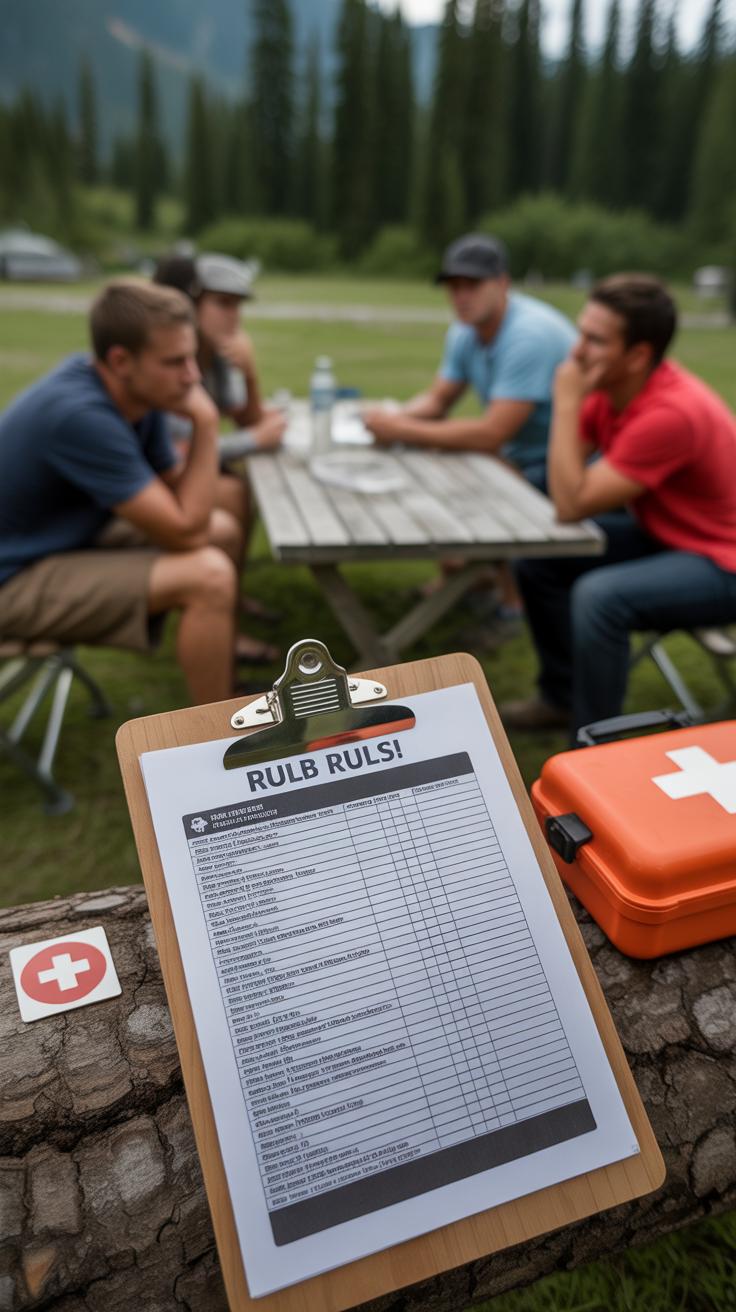
Clear Boundaries
Setting clear boundaries before the scavenger challenge begins is really crucial. It keeps everyone within a safe area and prevents accidental wandering into risky spots like steep slopes or private property. Sometimes, players get so caught up in the fun that they might forget where the limits are. Marking boundaries with natural markers, flags, or even ropes makes it easier for participants to know their limits without constant reminders.
When everyone knows exactly where the game zone ends, it reduces stress for the group leaders or parents watching over. Plus, it keeps younger children from straying too far, which is often a worry with outdoor games. You might think it restricts freedom a bit, but it actually helps maintain freedom within a safe perimeter. It’s a little trust and caution rolled into one; a balance that usually works well.
Respecting Nature
One rule I always find worth repeating is this: respect nature. Teaching players not to pick plants or disturb animals is key for keeping the outdoor environment healthy—and for future games too. Kids might want to grab interesting leaves or move stones to check underneath, but encouraging gentle observation instead protects the area.
Try explaining why some mushrooms or flowers should stay untouched. When players understand that their actions have consequences, they’re more willing to follow these guidelines. It’s a bit like being a temporary guest in nature’s home, where careful behavior matters. Sometimes, players forget this in their excitement, so gentle reminders during the game can help keep things on track. The goal isn’t to limit fun but to ensure the fun doesn’t cause harm.
Different Types of Outdoor Scavenger Challenge Games
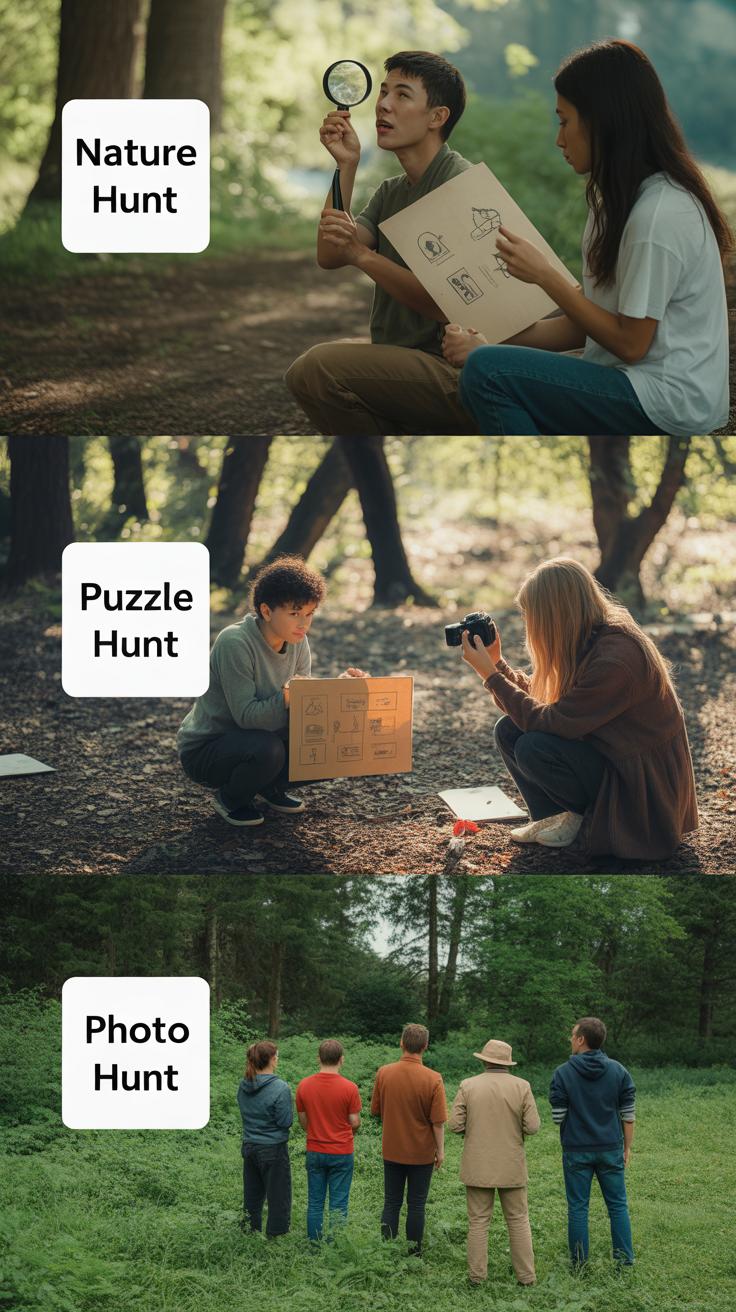
When thinking about outdoor scavenger challenges during camping, there’s more variety than you might expect. Mixing up the formats can keep everyone interested and eager to participate, especially if you play over several days. Here are a couple of common—and slightly different—styles you might want to try.
Photo Scavenger Hunts
This type flips the typical hunt on its head by using cameras or phones instead of collecting physical objects. You ask players to snap pictures of specific things or moments—like a certain type of bird, an unusual rock formation, or even a teammate doing a silly pose by a tree. It’s less about lugging stuff around and more about observation and creativity. I’ve tried this once, and it surprisingly got everyone looking at their surroundings in new ways. Plus, no worry about accidentally disturbing the environment, which feels less stressful for some.
Item Collection Hunts
The classic approach: players are given a list of natural items to find and bring back. Think pinecones, feathers, or smooth stones. It’s hands-on and tactile, which suits kids and the more traditionalists in the group. Just keep the list balanced—you don’t want everyone stripping the campsite bare or chasing after things that might be rare or fragile. I’ve noticed that this style can turn a bit competitive quickly, so maybe add a twist like grouping certain items together or assigning points for more unusual finds. Keeps it unpredictable.
Tips for Hosting a TeamBased Scavenger Challenge
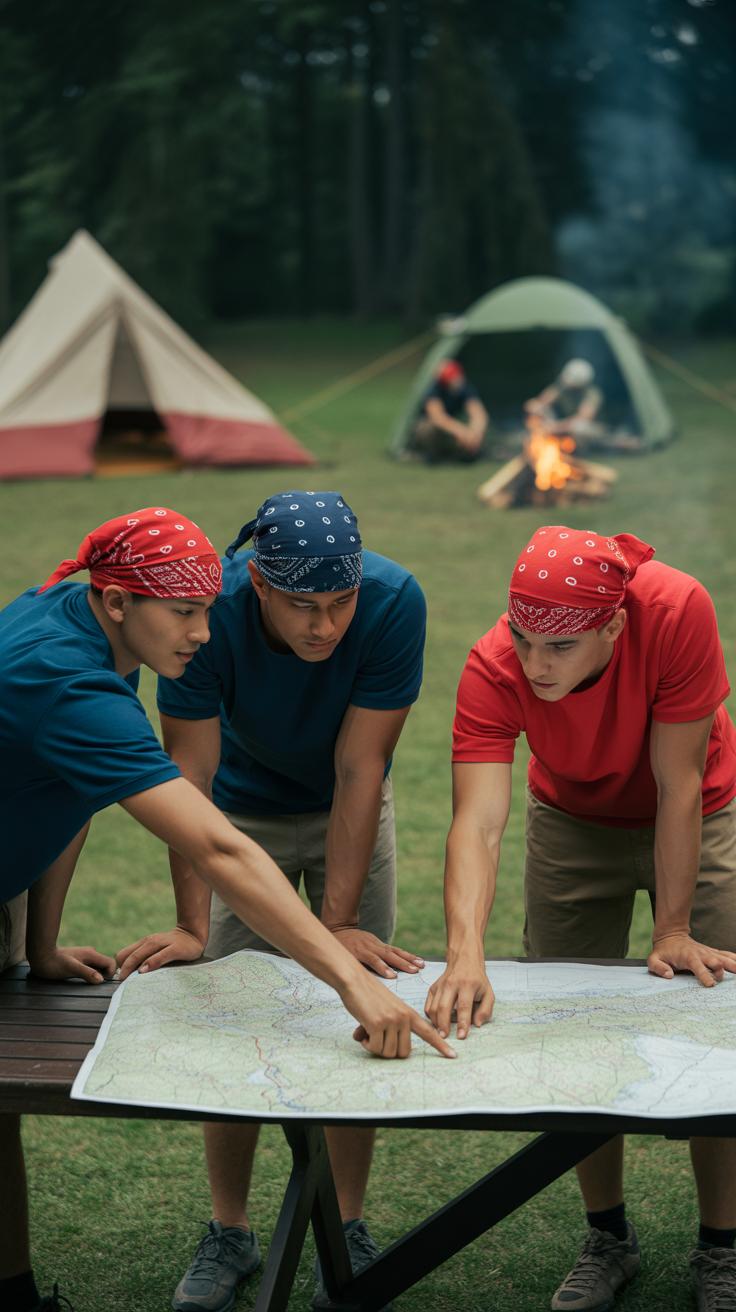
Organizing teams for a scavenger challenge takes a bit more than just splitting people up randomly. You want team sizes to feel fair—too big and some players might fade into the background; too small and it can get overwhelming fast. Think about the number of players you have and aim for groups of three to five. That size usually keeps everyone active without causing chaos.
Assigning roles can really help keep things balanced. Maybe one person is the navigator, another the note-taker, someone else handles collecting items or snapping photos. It helps if roles are loosely defined so players can switch if they want. Sometimes the best teamwork happens when roles aren’t set in stone.
To keep competition friendly, remind the teams that the goal is to work together, not just to win. Encourage communication—simple things like checking in with each other or sharing ideas can make a big difference. You might even see quiet participants shine when given a chance to contribute in their own way.
What ways have you noticed teams connect better during these games? It’s interesting how a little cooperation can turn a simple scavenger hunt into a meaningful group experience. And sometimes, just the act of talking more openly creates unexpected moments of teamwork—and fun.
Making the Scavenger Challenge Educational
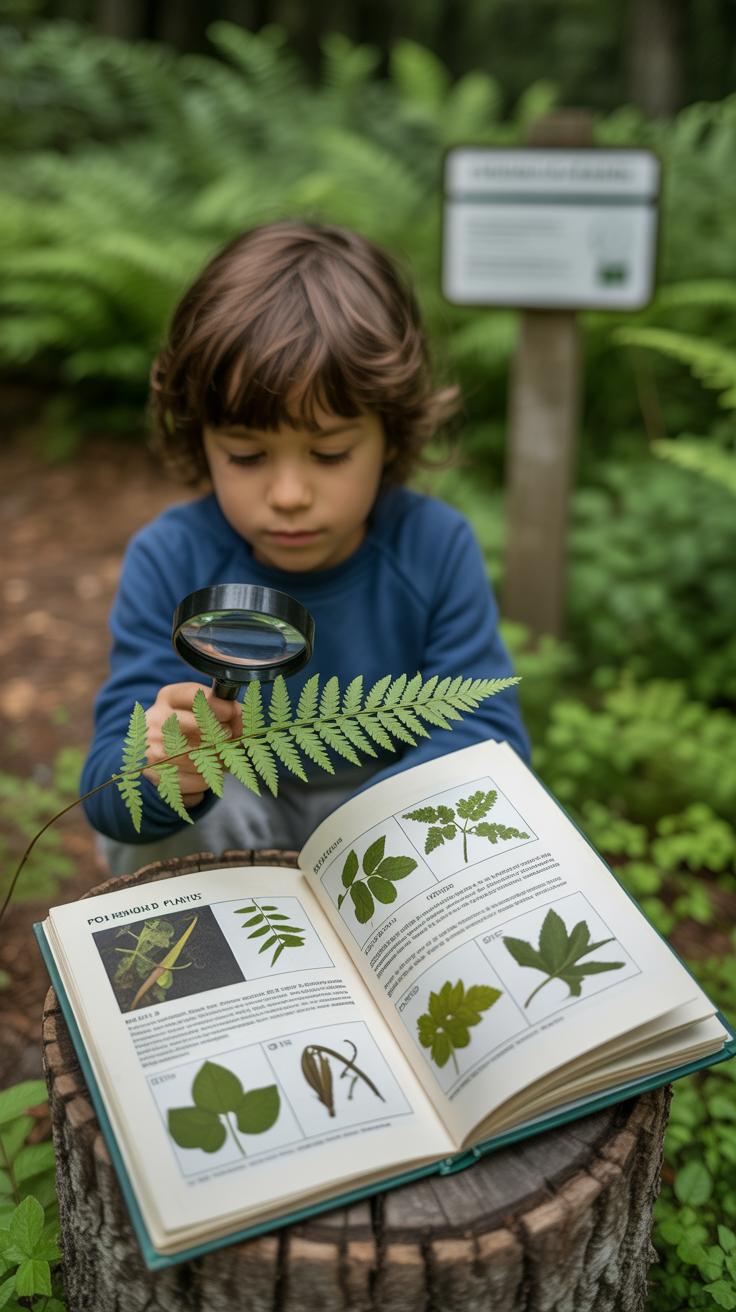
When you want to add an educational twist to your outdoor scavenger games, it’s really about weaving learning into the fun without making it feel like a lesson. For instance, you can turn simple scavenger hunts into mini nature explorations. Ask participants to identify specific plants or trees native to the area. Maybe they spot an animal track or a bird’s song—they can check off those discoveries. This keeps everyone curious about their surroundings and quietly builds up their knowledge about local ecosystems.
Try including facts or questions about why certain plants matter or how animals interact with their habitat. It’s surprising how much kids and adults soak up when it’s low-pressure and game-like.
The survival skill angle can add practical value, too. Imagine assigning a task to find a spot near safe water or a natural shelter. You might ask players to identify which water sources seem clear or what signs indicate a good shelter area in case of sudden weather changes. It’s less about strict survival training and more about introducing useful observations that might stick with people beyond the game.
Sometimes, these tasks get debates started—like whether that water looks clean enough or if that hollow tree would really keep you dry. Those little discussions often make the learning more memorable, even if they’re a bit uncertain at times.
Using Technology to Enhance Outdoor Scavenger Challenges
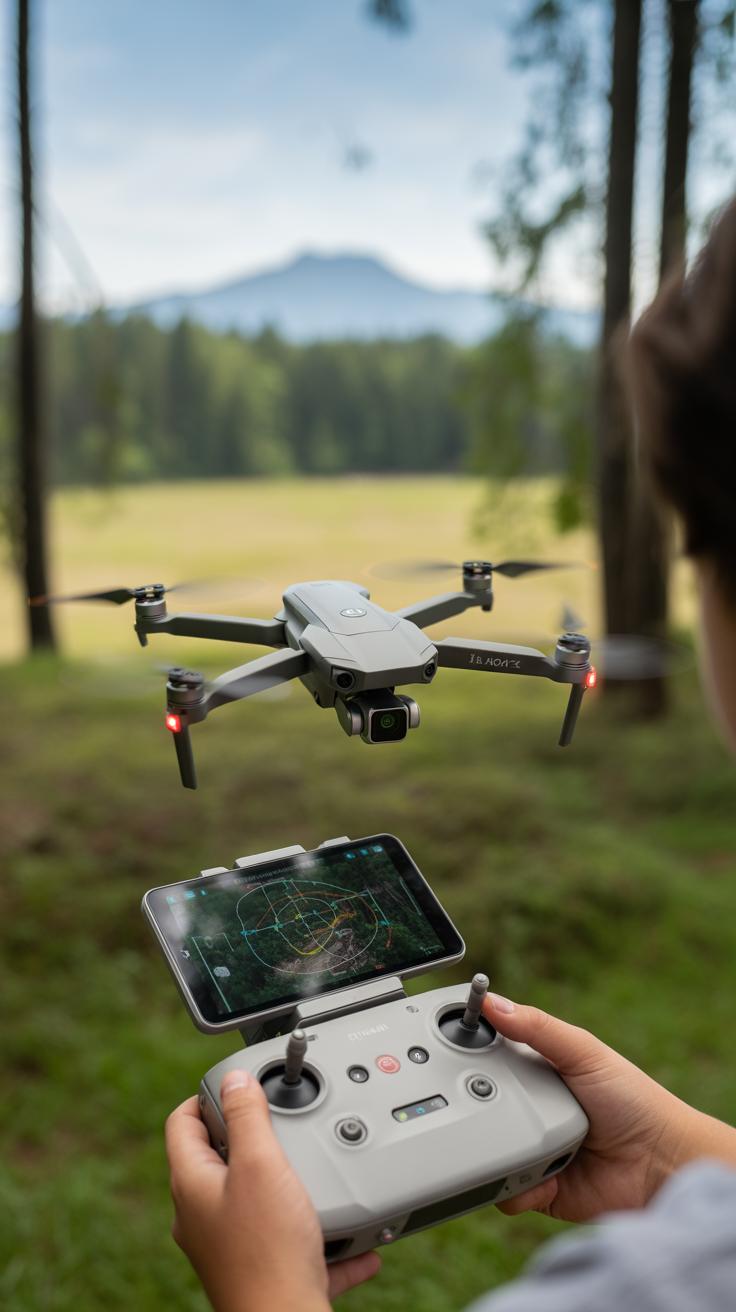
GPS and Location Tracking
GPS devices can really shake up a scavenger game by adding a layer of precise navigation. Instead of vague hints, you set exact spots that teams must reach. This narrows down the search but also pushes players to think about routes and timing. Sometimes, a simple waypoint can lead to odd detours or unexpected discoveries nearby. In one game I joined, teams had to find checkpoints marked only by GPS coordinates—no clues or maps allowed. It made the game feel like a mini adventure in itself.
Using GPS also helps keep track of where everybody is, which can be handy if you want to manage multiple teams without chaos. Though, on the flip side, it takes away some traditional wandering charm, which some might miss. Still, most campers enjoy the new challenge GPS introduces.
Photo and Video Tasks
Cameras, especially those on smartphones, let players prove they found the item or landmark—and get creative too. Asking teams to snap photos or shoot short videos adds fun, and it preserves memories beyond just a checklist. It’s cool later, looking back at the funny or unexpected shots that popped up.
For example, you might ask players not only to find a certain leaf but to capture a video of them describing it or acting out a short story about it. These tasks give a personal touch to the game and can even spark laughter or friendly competition. On a camping trip, I saw this lead to impromptu skits and goofy poses, all thanks to a little photo challenge thrown in.
Of course, there’s always a balance. Too many photo or video steps might slow things down or distract from nature. But when used right, technology can turn simple scavenger hunts into interactive, memorable experiences.
Adjusting Scavenger Challenges for Different Age Groups
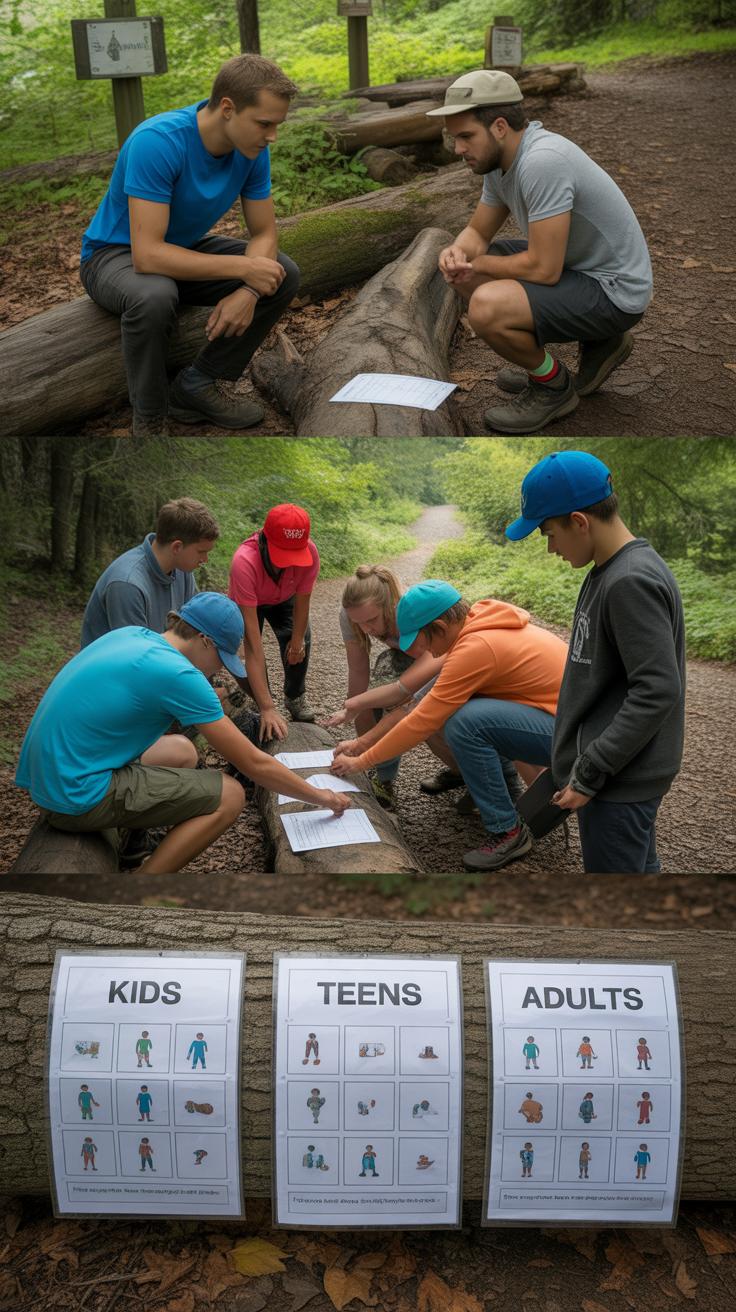
Tailoring scavenger hunts to fit the players’ ages makes all the difference. For younger kids, keep it simple. Choose tasks that don’t require too much searching or remembering. Ask them to find things like a smooth rock, a stick shaped like the letter Y, or a red leaf—stuff that’s easy to spot and won’t frustrate them. Sometimes just asking for items by color or shape works well. The goal is to make them curious, not overwhelmed.
With teens and adults, you can really stretch the game. Longer hunts, multi-step clues, or puzzles that need solving make it more gripping. For example, instead of just finding a pinecone, they might need to count how many pinecones are in an area or decode a riddle to know where to look. This keeps the challenge alive and prevents boredom when the simple items feel too repetitive.
Remember, you can mix between these extremes if your group includes various ages. Perhaps break into teams or set different tasks based on skill level. Sometimes, the older ones get a head start or a bonus challenge, while younger ones focus on easier finds—all keeping the game fair and, yes, fun.
Introducing Prizes and Rewards to Motivate Players
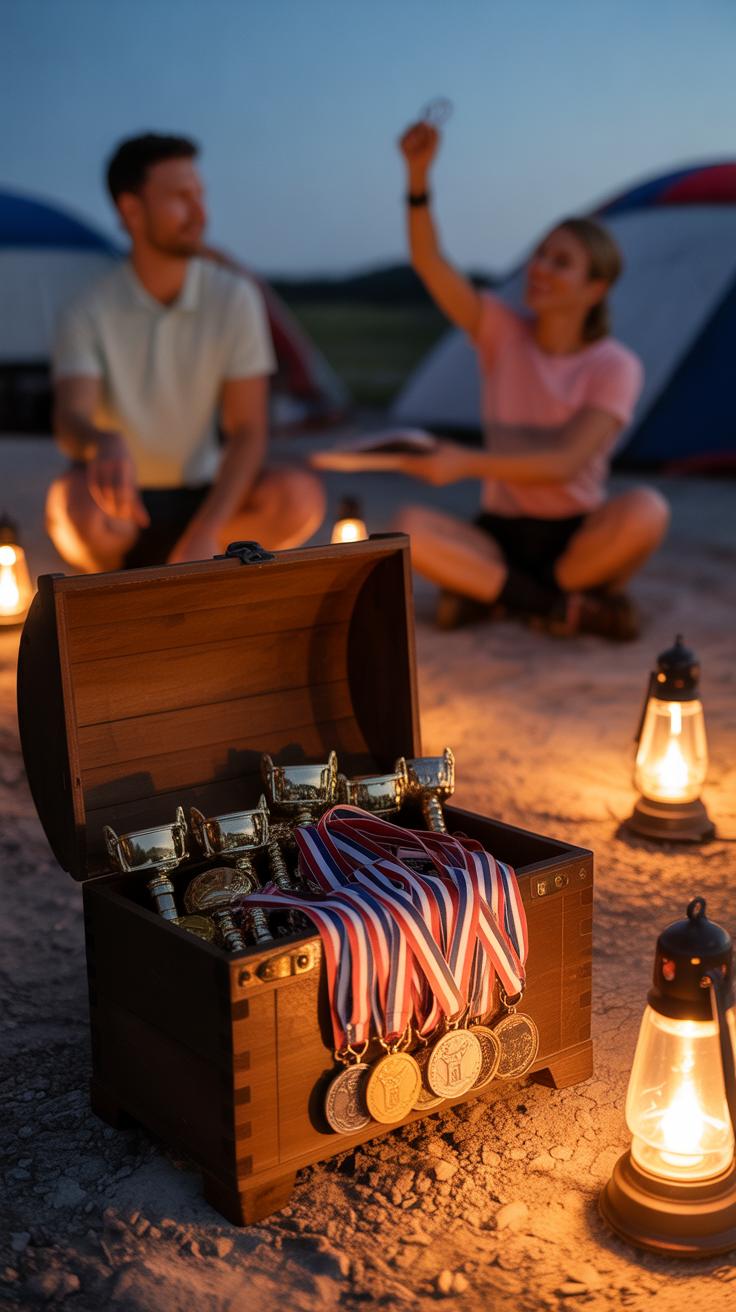
Adding prizes to your scavenger challenge can really boost the energy around the campsite. When people have something to aim for, they often jump in with more enthusiasm—sometimes even the shyest players get more involved. But you want to be careful not to turn the whole thing into a competition that feels like a chore. The key is balancing motivation with fun, so the game stays lighthearted.
Non-material rewards work surprisingly well. Imagine giving the winner extra time to tell a story by the campfire or letting them pick the next game. Those moments feel special without needing any money or fancy gifts. Things like this can make players feel appreciated and keep the spirit friendly.
If you want to include physical prizes, keep them simple and affordable. Small badges, stickers, or even a handful of treats can spark excitement. I remember once handing out colorful patches to kids, and their eyes lit up just as much as if it was a big prize. Sometimes, it’s less about what you give and more how you give it that matters.
Conclusions
Outdoor Scavenger Challenge camping games bring energy and fun to any camping trip. They encourage players to observe their surroundings closely while working together to achieve a goal. These games create memories and teach important skills like teamwork and problem-solving. Whether you are camping with family or friends, adding these challenges makes your outdoor adventure more lively.
Planning simple games like scavenger hunts adds a playful spirit to camping. With a little preparation, you can create enjoyable challenges suitable for all ages. These games keep everyone active, curious, and connected to nature. You can look forward to more laughs, learning, and fun every time you head outdoors with the outdoor scavenger challenge games.


